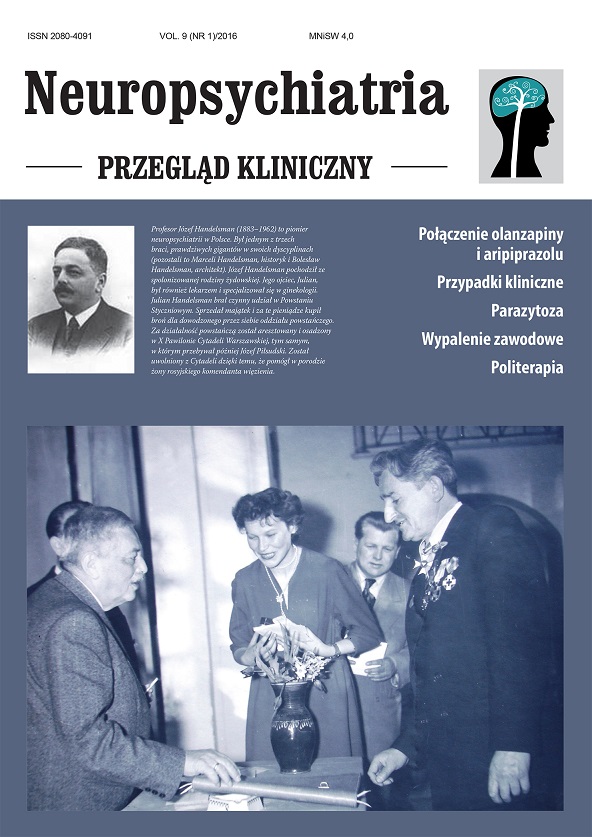Antipsychotics: improving their efficacy, reducing adverse effects. Case study series. Part 1st Review article
Main Article Content
Abstract
Antipsychotics, which were introduced in 1952, and atypical antipsychotics, introduced in 1988, are characterized mostly by their efficacy-to-safety balance. Both, efficacy and safety features, can be combined into one effectiveness concept. This approach is decisive in relation to the outcomes of short and long-term therapy. It is common that questions about clinical advantages of any single antipsychotic are being raised when we want to administer that medicine. Actually, the antipsychotic effectiveness is usually individual. We report the case series of patients, treated successfully with various antipsychotics (olanzapine, aripiprazole, quetiapine). The main idea of this series is to depict the constant therapeutic effort to balance the combined efficacy-tolerance effects.
Article Details

This work is licensed under a Creative Commons Attribution-NonCommercial-NoDerivatives 4.0 International License.
Copyright: © Medical Education sp. z o.o. License allowing third parties to copy and redistribute the material in any medium or format and to remix, transform, and build upon the material, provided the original work is properly cited and states its license.
Address reprint requests to: Medical Education, Marcin Kuźma (marcin.kuzma@mededu.pl)
References
2. Henderson DC, Fan X, Copeland PM et al. Aripiprazole added to overweight and obese olanzapine-treated schizophrenia patients. J Clin Psychopharmacol 2009; 29(2): 165-169.
3. Tiihonen Suokas JT, Suvisaari JM et al. Polypharmacy with antipsychotics, antidepressants, or benzodiazepines and mortality in schizophrenia. Arch Gen Psych 2012; 69: 476-483.
4. Łoza B. Dwie doustne postacie kwetiapiny: tabletki o przedłużonym (XR) i natychmiastowym uwalnianiu (IR). Neuropsychiatria. Przegląd Kliniczny 2014; 6(2): 69-74.

